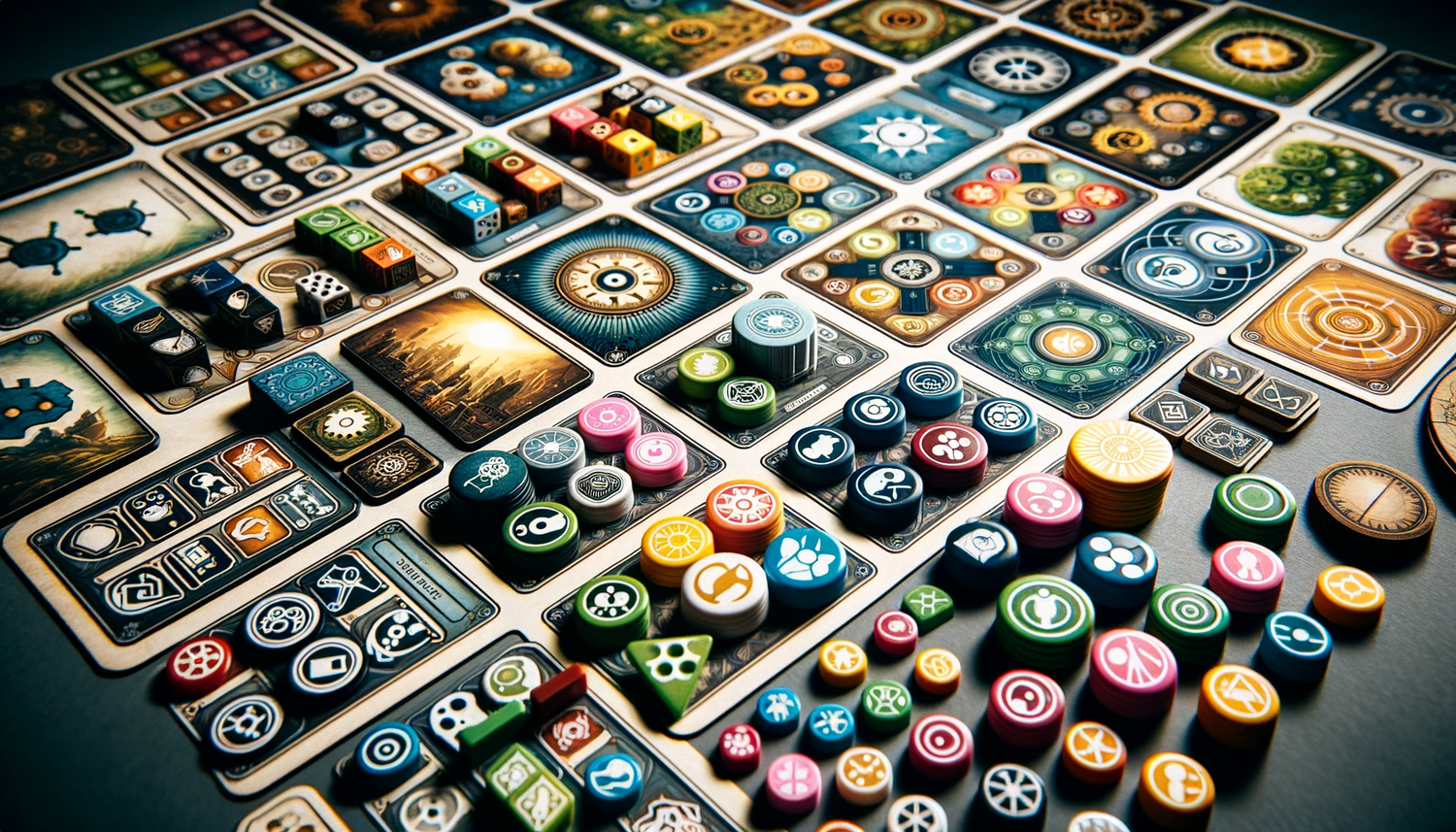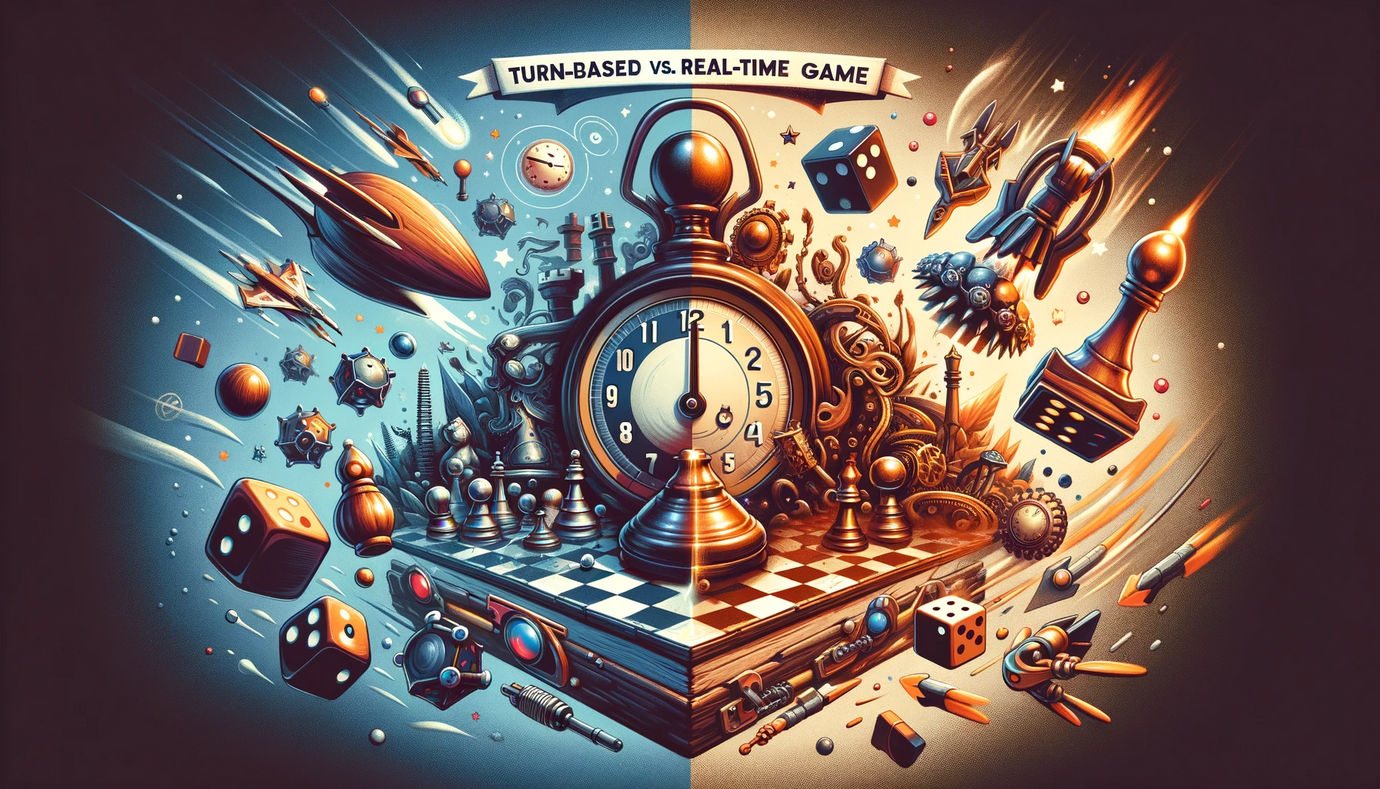Developing an Iconography System for Games

Introduction
In board and card games, iconography is a crucial aspect of design that can significantly enhance the player experience. A well-designed iconography system can make a game more intuitive, accessible, and visually appealing. This blog post will explore the process of developing an effective iconography system for games, focusing on clarity, thematic consistency, and player engagement.
Understanding the Role of Iconography in Games
Iconography in games serves as a visual language, communicating game mechanics and information efficiently through symbols and images. Good iconography reduces the reliance on text, making the game more accessible, especially for players facing language barriers.
1. Identifying the Need for Icons
Determine Information to be Conveyed: Identify the information that needs to be communicated through icons. This can include types of resources, actions, statuses, or various game mechanics.
Assessing Complexity: Consider the complexity of your game. Games with multiple mechanics or resources may benefit more from a well-developed iconography system.
2. Designing Clear and Intuitive Icons
Simplicity and Clarity: Design icons to be simple and easily recognizable. Avoid overcomplicated designs that might be confusing at a glance.
Intuitive Design: Icons should be intuitive or relate logically to what they represent. For instance, a tree icon could represent wood or nature in a game.
3. Consistency in Style and Aesthetics
Unified Visual Style: Ensure that all icons share a consistent style, aligning with the game's overall visual aesthetic.
Thematic Alignment: Icons should reflect the game’s theme. For example, a sci-fi themed game should have icons that feel futuristic or technological.
4. Balancing Iconography with Text
Complementing Text with Icons: While icons are helpful, they may not always replace the need for text. Use text to complement the icons where necessary, especially for more complex mechanics.
Use of Tooltips or Legends: Provide a legend or tooltips for icons, particularly in games with extensive or complex iconography.
5. Color Coding and Differentiation
Effective Use of Color: Utilize colors to categorize or differentiate between different types of icons. For instance, different colors can represent different resource types.
Accessibility Considerations: Be mindful of colorblindness and accessibility. Ensure that icons are distinguishable even without color cues.
6. Testing Icons for Clarity and Effectiveness
Playtesting: Test the icons with players to gauge their clarity and effectiveness. Are players able to understand and remember what each icon represents?
Iterative Design Process: Based on feedback, refine the icons. This may involve simplifying designs, adjusting colors, or changing the representation.
7. Integrating Iconography into Game Components
Application Across Components: Apply your iconography consistently across all game components, including cards, boards, and player aids.
Size and Visibility: Ensure that icons are of a suitable size and contrast to be easily visible and distinguishable in the game’s context.
8. Creating an Iconography Reference
Rulebook Reference: Include a comprehensive iconography reference in your game’s rulebook. Players should be able to easily find and understand the meaning of each icon.
Quick Reference Cards: Consider providing quick reference cards or sheets for players to have on hand during gameplay.
9. Evolving Iconography with the Game
Expansion and Scalability: Design your iconography system to be expandable. If you plan to release expansions or updates, ensure new icons can be integrated seamlessly.
Flexibility for Future Changes: Maintain some flexibility in your iconography system for potential future changes or additions.
10. Finalizing and Implementing the Iconography System
Final Review and Polish: Once the icons have been thoroughly tested and refined, do a final review. Ensure they are polished, consistent, and effectively integrated into the game.
Feedback Integration: Incorporate all the feedback and insights gained from playtesting into the final implementation of your iconography system.
Developing an effective iconography system is a crucial part of game design, aiding in gameplay clarity, thematic immersion, and overall player experience. By focusing on creating intuitive, consistent, and accessible icons, and by rigorously testing and refining these elements, you can enhance the ease of play and aesthetic appeal of your game. Remember, well-designed icons not only convey information efficiently but also contribute to the unique identity and charm of your game.







